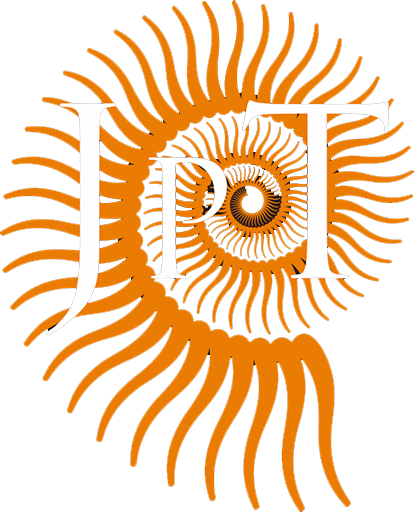JPT No. 8 – Using Confocal Laser Scanning Microscopy To Image Trichome Inclusions In Amber
Neil D. L. Clark1 and Craig Daly2
1- Hunterian Museum, University of Glasgow, University Avenue, Glasgow G12 8QQ, Scotland, UK – Corresponding author email: nclark@museum.gla.ac.uk
2- Neuroscience & Biomedical Systems, Faculty of Biological and Life Science, University of Glasgow, University Avenue, Glasgow G12 8QQ, Scotland, UK
ABSTRACT
Confocal laser scanning microscopy (CLSM) is an analytical technique usually applied to biological and medical samples. It is used to produce high resolution in-focus three dimensional images of thick sections by targeted fluorescence. Trichomes held in amber fluoresce in the far red range whereas amber fluoresces in the ultraviolet. This allows the trichomes to be resolved easily from the amber by CLSM. Samples of amber from two regions were selected for analysis. Baltic amber (Eocene) is well known for its trichome inclusions which have, in the past, been used as a diagnostic feature of that amber. Mexican amber (Middle Miocene) from Simijovel, Chiapas, Mexico also contains abundant trichomes. Samples of amber from both these locations were successfully imaged and re-constructed in 3D using CLSM. This technique enables detailed analysis of the trichome structure without damaging the sample.
RESUMO [in Portuguese]
A microscopia confocal de scanning laser é uma técnica analítica que é geralmente aplicada em amostras biológicas e médicas. Esta técnica produz imagens tridimensionais em foco de alta resolução de secções espessas por fluorescência. Os tricomas aprisionados no âmbar fluorescem na zona mais distante do espectro visível do vermelho enquanto que o âmbar fluoresce no ultravioleta. Isto permite identificar facilmente os tricomas do âmbar por microscopia confocal de scanning laser. Amostras de âmbar nas duas regiões foram seleccionadas para análise. O âmbar do Báltico (Eocénico) é conhecido pelas suas inclusões de tricomas que foram já usadas como características diagnóstico para este tipo de âmbar. O âmbar do México (Miocénico médio) de Simijovel, Chiapas, México também contém tricomas em abundância. Amostras destas duas localizações foram reconstruídas com sucesso em 3D usando microscopia confocal de scanning laser. Esta técnica permite efectuar análises detalhadas das estruturas dos tricomas sem prejuízo da amostra.
INTRODUCTION
The use of confocal laser scanning microscopy (CLSM) for the study of inclusions in amber is a recent development. Böker & Brocksch (2002) produced a series of images of insects in Baltic amber using CLSM and identified the potential for 3D imaging of minute detail of taxonomically important morphological structures such as the mandibles and genital organs. Since then, however, very little has been published on CLSM analysis of amber inclusions despite the apparent benefits.
Another study using this technique, amongst other microscopic techniques, looked at some Spanish amber from Álava (Ascaso et al. 2003, 2005). The study looked at a protozoan with fungal hyphae trapped in amber and produced a 3D image based on a series of optical sections recorded by the CLSM. It is perhaps surprising, considering the detail and quality of the images that can be produced, that more studies have not incorporated this technique. More recently, Speranza et al. (in press) have used light microscopy, CLSM & widefield fluorescence microscopy to image microscopic fungi embedded in amber, thus confirming the benefits of a ‘fluorescence’ approach.
Trichomes are present in the vast majority of angiosperms and have been considered for some time to be of importance in comparative systematic studies (Theobald et al. 1979). They have an important role as defensive structures, especially in repelling phytophagous insects (Levin 1973). There is often more than one trichome type on any one taxon, but certain types may be more common to one taxon than another (Theobald et al. 1979). The taxonomic value of trichomes is therefore limited, but the Baltic trichomes are not inconsistent with them being from a type of oak.
In this study, certain elements of the microflora are examined. The “stellate hairs”, or trichomes, are common in Baltic amber and have been considered as a characteristic of this type of amber (Weitschat & Wichard 2002). These trichomes are found associated with, and attached to, the male oak flowers and are therefore thought to belong to oak also (Weitschat & Wichard 2002) although there may be more than one type of trichome present. During this study samples from Chiapas, Mexico were also examined and were found to contain abundant trichomes. No previous record of trichomes in Mexican amber has been found in the literature.
Weitschat and Wichard (2002) describe the ‘stellate hairs’ found in Baltic amber as structures that develop on the flower and leaf buds of the oak that are shed in great numbers every year. They also state that no studies have been able to clarify the origin or their significance for amber.
The interpretation of what the inclusions in Baltic amber represent in terms of their ecology has been the subject of much debate as many of the insect inclusions suggest a wide range of biotopes (Weitschat and Wichard 2002). Even individual pieces of amber seem to contain species from what would currently be both temperate and tropical regions (Weitschat 1997). This may suggest that species represent within the amber could have had a wider range then than their extant relatives (Weitschat and Wichard 2002).
In the present study we present a technique which uses CLSM and 3D imaging to analyse the structure of trichomes.
